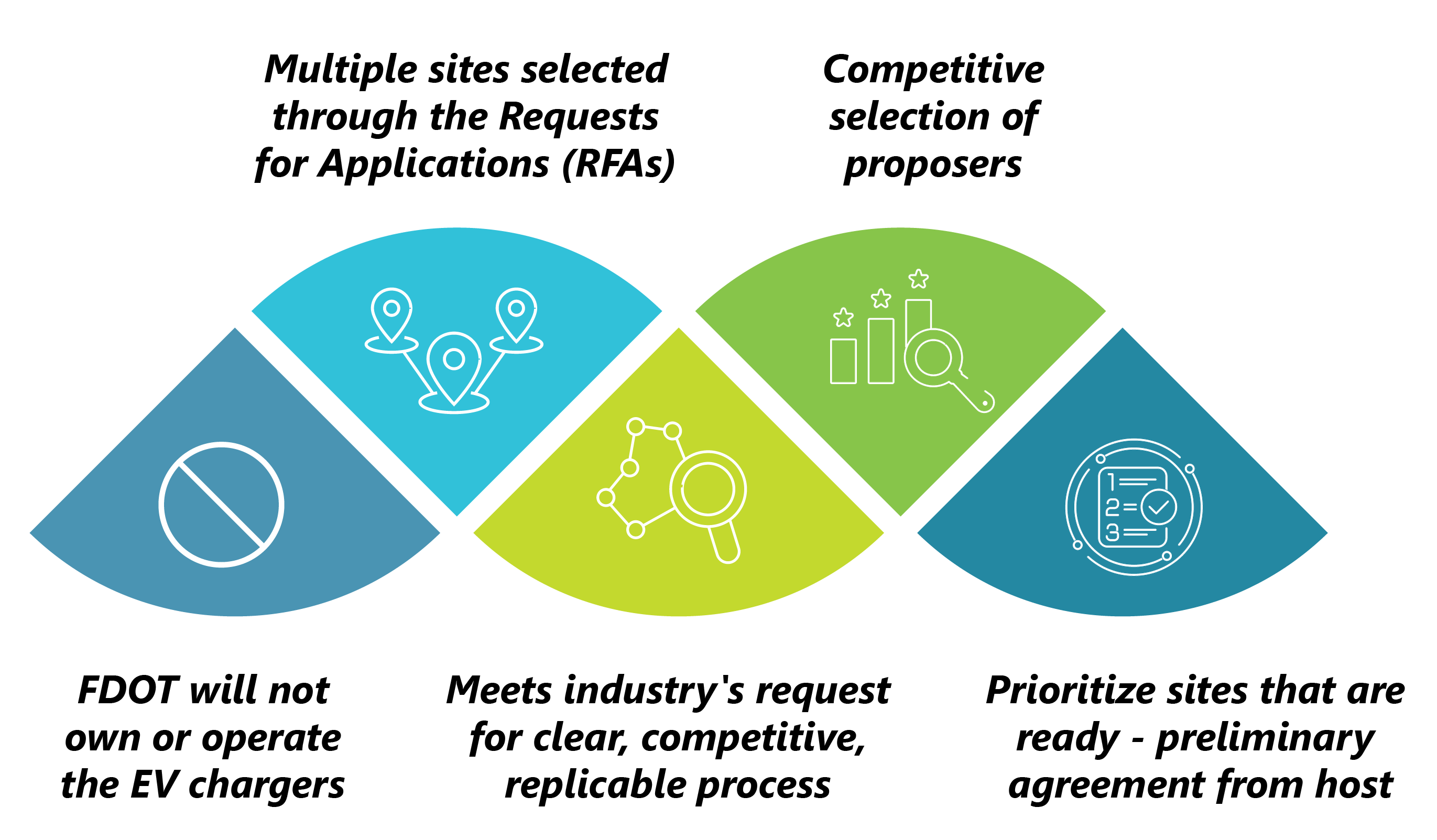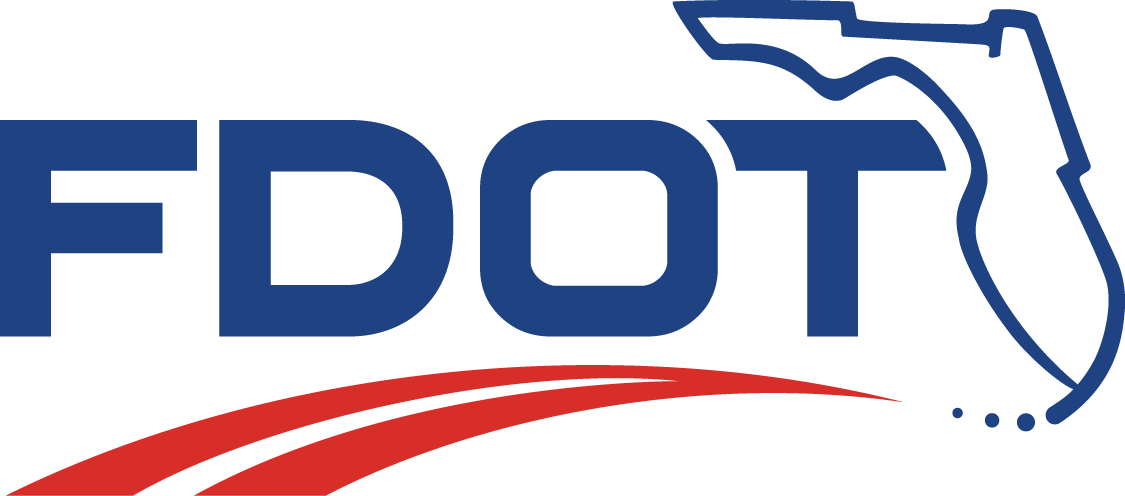
ELECTRIC VEHICLE INFRASTRUCTURE
About the National Electric Vehicle (EV) Infrastructure
The NEVI program is a part of the Infrastructure Investment and Jobs Act (IIJA). Through this effort, two funding sources were created, a formula program with $5B and a discretionary program with $2.5B. The current focus of FDOT's NEVI program is on the formula funds.
EV Charging Infrastructure Key considerations include:
- EV charging infrastructure must be public or to authorized commercial motor vehicle operators from more than one company.
- EV charging must be located along a designated AFC.
- States must prioritize charging locations along the Interstate Highway System.
- EV charging locations should be spaced at a maximum of 50 miles apart.
- States must prioritize charging locations along the Interstate Highway System.
- EV charging locations must meet certain power capabilities.
- States should prioritize rural, underserved, and disadvantaged communities for EV charging infrastructure.
- Consider locations with publicly available restrooms, appropriate lighting, and sheltered seating areas.
FDOT's Program Approach

The NEVI program in Florida will be implemented in phases, and the first phase will focus on the interstates in alignment with the national NEVI program priorities. Other AFCs will be deployed in later phases. Below is the current timeline:
Electric Vehicle Infrastructure Deployment Program Priority Timeline
![]() July 2021 – FL Electric Vehicle Master Plan Approved
July 2021 – FL Electric Vehicle Master Plan Approved
![]() February 2022 – NEVI Guidance Issued by FHWA
February 2022 – NEVI Guidance Issued by FHWA
![]() September 2022 – 2022 - FL’s EVID Plan Approved
September 2022 – 2022 - FL’s EVID Plan Approved
![]() March 2023 – FINAL NEVI Rule Published by FHWA
March 2023 – FINAL NEVI Rule Published by FHWA
![]() June 2023 – NEVI 2.0 Guidance
June 2023 – NEVI 2.0 Guidance
![]() October 2023 – 2023 - FL's EVID Plan Approved
October 2023 – 2023 - FL's EVID Plan Approved
![]() January 2025 – 2024 - FL's EVID Plan Approved
January 2025 – 2024 - FL's EVID Plan Approved
Anticipated Next Steps
![]() Please monitor site for any updates
Please monitor site for any updates
